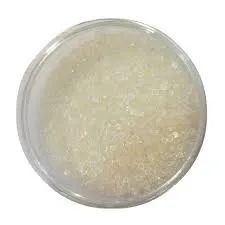The Removal of PFAS from Water A Growing Concern
Per- and polyfluoroalkyl substances (PFAS) have emerged as a significant environmental and public health concern over the past few decades. Often referred to as forever chemicals, PFAS are synthetic compounds that resist degradation in the environment, leading to their accumulation in soil, water, and living organisms. Used in a variety of applications such as firefighting foams, non-stick cookware, and water-repellent fabrics, the widespread prevalence of PFAS poses serious risks, prompting urgent discussions on effective removal methods from water supplies.
Understanding PFAS
PFAS encompasses a large group of more than 4,700 chemical substances. Among them, the most notorious are perfluorooctanoic acid (PFOA) and perfluorooctanesulfonic acid (PFOS). These chemicals have been linked to several adverse health effects, including endocrine disruption, increased cholesterol levels, immune system effects, and certain types of cancer. The stability of PFAS in the environment means they can persist for years, causing contamination of drinking water sources and raising alarms among regulatory agencies and health organizations.
Sources of PFAS Contamination
PFAS enter water systems through various pathways. Industrial discharges, landfill leachates, and agricultural runoff containing PFAS-laden products are common sources. A significant contributor is firefighting foam, which contains high concentrations of these substances. Once they enter the water supply, PFAS can be notoriously difficult to remove due to their chemical structure, which repels water and resists breakdown.
Removal Techniques
Given the persistent nature of PFAS, multiple removal techniques have been developed and implemented to address this growing issue. Some of the most effective methods include
1. Activated Carbon Filtration This is one of the most commonly used methods to remove PFAS from water. Activated carbon filters adsorb PFAS from the water, effectively trapping the contaminants. They can significantly reduce PFAS concentrations; however, their effectiveness can vary based on the carbon type and the specific PFAS compounds present.
removal of pfas from water

2. Ion Exchange Resins Ion exchange involves the use of resin beads that exchange ions in the water with those on the resin, effectively capturing PFAS. This method can achieve high removal rates but requires careful management to regenerate the resin after it becomes saturated with contaminants.
3. Reverse Osmosis This technique uses a semi-permeable membrane to separate PFAS from water. Reverse osmosis is effective in removing a wide range of PFAS compounds, but it can be more costly and requires significant energy input.
4. Advanced Oxidation Processes (AOPs) These methods utilize powerful oxidants to break down PFAS into less harmful byproducts. AOPs show promise in treating PFAS-contaminated water; however, they may lead to the formation of new contaminants that require further assessment and treatment.
Regulatory Efforts and Public Awareness
With increasing evidence of health risks associated with PFAS, regulatory efforts have intensified. In the United States, the Environmental Protection Agency (EPA) has set health advisory levels for PFOA and PFOS and is working towards establishing enforceable limits in drinking water. Many states have implemented their regulations and remediation standards, reflecting growing public concern.
Raising awareness about PFAS contamination is crucial for driving change. Communities are increasingly advocating for stricter regulations, better testing procedures, and more funding for clean-up efforts. The engagement of environmental organizations and affected citizens plays a vital role in pushing for legislative changes that prioritize safe drinking water.
Conclusion
The removal of PFAS from water is a complex challenge, given the vast array of compounds and their resistance to degradation. Effective removal and remediation strategies are essential for protecting public health and the environment. As research progresses and technologies evolve, it is imperative that both governmental bodies and communities collaborate to address PFAS contamination comprehensively. Ensuring clean and safe water for future generations must remain a priority as awareness and regulatory measures grow in response to this urgent environmental crisis.

